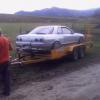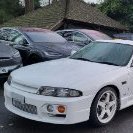Announcements
-
Similar Content
-
Latest Posts
-
By joshuaho96 · Posted
Should work if it came out of a GTST. -
I don't know. The main problem is that link is clearly at FB marketplace, and I have never willingly clicked a link that will take me to any Meta owned website. Even if it wasn't clear, I would hover over it to find out before clicking on it anyway, same as I do for all links everywhere. Just good internet hygiene + refusal to participate in the lizard man's empire. But, you will need to deal with the inevitable HICAS light that will come up if you stop the steering angle sensor from working. On an R32, this is as simple as unplugging the smaller of the two loom plugs in the back of the HICAS CU. I don't know if this works on later HICASs.
-
By PotatoCake · Posted
Ive got a hicas lock bar, so thats effectivley disables it. I found this wheel on market place, looks to be in pretty good condition, would it just bolt straight in? https://www.facebook.com/marketplace/item/1218520015890587 -
I'll be getting a timing light this weekend and also checking for spark. I was trying to avoid having to take all the Y piping things from the upper intake off again but I guess I have no choice lol
-
Because the drive dog for the steeering angle sensor is present on wheels that came in HICAS cars and not present on wheels that came on non-HICAS cars. Not that I would let that bother me, because HICAS is trash and any excuse to get rid of it is a good excuse.
-




Recommended Posts
Create an account or sign in to comment
You need to be a member in order to leave a comment
Create an account
Sign up for a new account in our community. It's easy!
Register a new accountSign in
Already have an account? Sign in here.
Sign In Now